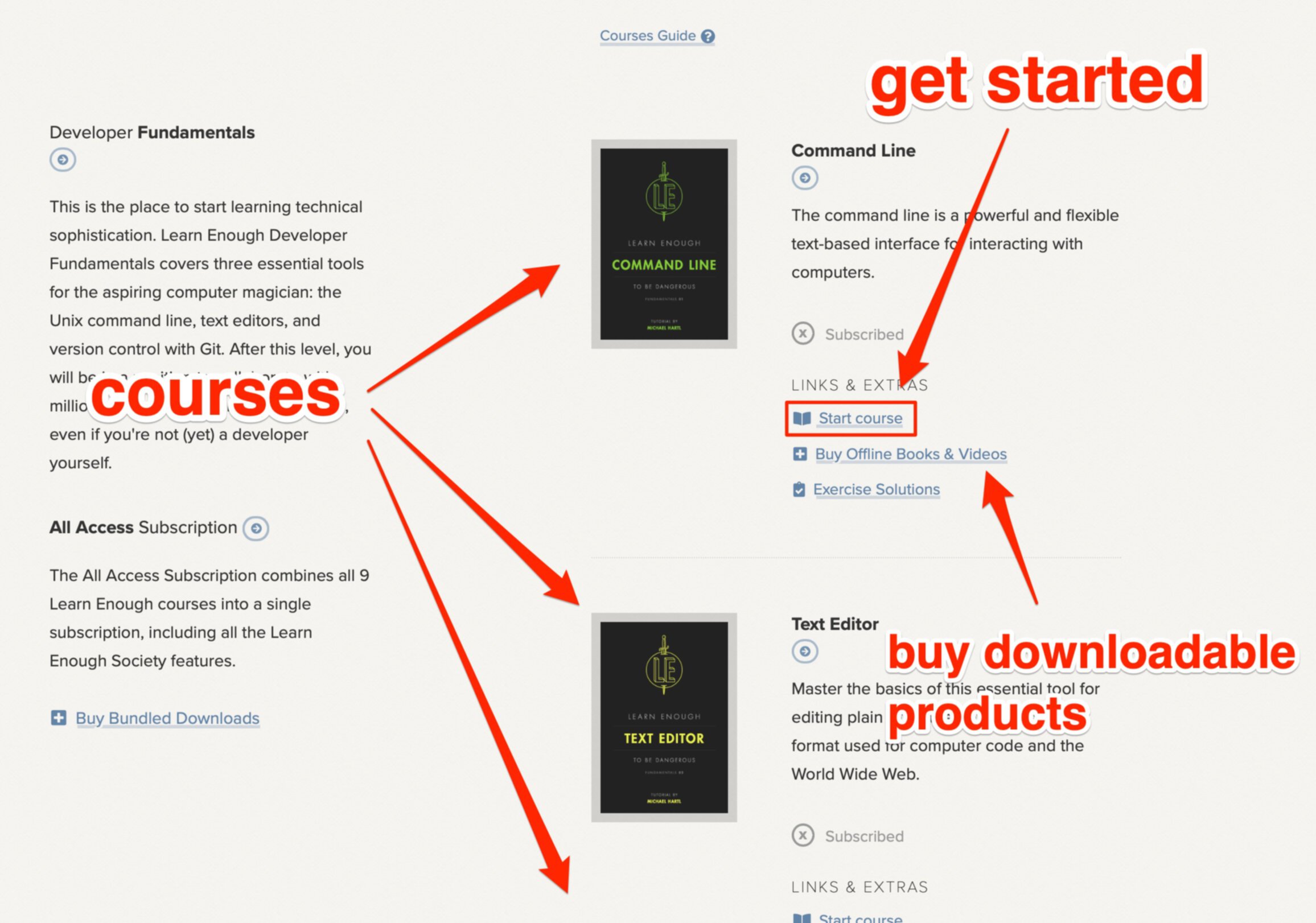
Ruby On Rails Development Trends: 2024 & Beyond
Ruby on Rails is a popular open-source web development framework that's been around for 20 years. It is known for its unique characteristics like simplicity, ease of use, rapid development, and low cost.
For these reasons, many major companies such as Airbnb, GitHub, and Shopify use it as the primary web framework. Furthermore, startups and small businesses favor Ruby on Rails for projects thanks to its support for rapid development.
Still, there's a supposition that Ruby on Rails has declined over time and that it will become an outdated programming language soon. There are several (precarious) foundations for these claims.
Performance issues: It is true that Ruby is executing slower than some other programming languages, such as C++. However, by using proper Rails app optimization methods, you can mitigate these performance issues.
Scalability issues: This is a common complaint, however, examples like GitHub and Twitch demonstrate that Ruby on Rails can handle high loads and support a large number of businesses if the organization has the right teams to back it up with software development. A team of experienced developers can provide scalability by simplifying code, using modular approaches to development, and preserving the app state on the client side.
Complexity: Some developers have criticized Rails for being overly complicated to master. However, you won't face such issues if you learn RoR with proper guidance. This is why you should use a platform like Learn Enough to learn RoR, where only industry legends and leading experts write and deliver courses.
Despite these widespread misconceptions, RoR remains one of the most popular frameworks used in software development.
Moreover, Ruby on Rails has an extremely active and supportive community that continuously contributes to improving the framework. It receives regular updates and new features while offering numerous open-source plugins and gems for use in Rails projects.
You can see RoR had its latest release in May 2023. Also, as you can see from Ziprecruiter, being a Rails developer is still one of the highest-paying jobs among developers. All these are clear signs of a very-much-alive programming framework.
Nevertheless, it’s important for Ruby on Rails developers to keep up with the latest trends if they want to stay relevant. That way, devs can streamline their development with the latest features and ensure that they're applying best practices to every build.
This is why even more experienced developers and dev teams can benefit from the constantly evolving Ruby on Rails tutorials created by Learn Enough.
The current state of Ruby on Rails
In recent years, Ruby on Rails has gained popularity, thanks to consistent updates and the introduction of new libraries and gems that makes it easier to design, develop and deploy web applications.
Ruby on Rails features and benefits
Let’s explore some key features of Ruby on Rails that make it unique compared to other programming languages.
MVC architecture: Ruby on Rails is based on Model, View, and Control architecture, which makes it very convenient since it's widely used by web developers across the world.
Budget-friendly: RoR is an open-source framework.
Easy to learn: The simple and English-like syntax makes it easy to understand.
Security: The Rails framework, by default, consists of security measures against cross-scripting and cross-site request forgery.
Simple testing tools: RoR comes with easy to learn RSpec unit testing setup.
Database support: RoR enables developers to choose from multiple databases (Such as MySQL, PostgreSQL, SQLite, etc).
Documentation: The extensive documentation of Ruby on Rails makes it easy for Ruby on Rails developers to understand and resolve problems.
Ruby on Rails popularity and adoption rates
According to the built with website, Ruby on Rails is currently being used on over 3.8 million websites, 611,596 of which are live. That means nearly 5.3% of all websites are built using Ruby on Rails.
Ruby on Rails is still used by many major companies like GitHub, Hulu, Basecamp, Shopify, Twitch, Dribble, Airbnb, SoundCloud, Kickstarter, etc.
According to the Stackoverflow 2022 Developer Survey, Ruby is the 17th most commonly used programming language, and Ruby on Rails is the 15th most commonly used web framework.
Ruby on Rails has 53k stars, 21.2k forks, and over 4700 contributors on GitHub. When observing the Google Trends data for the past 12 months, Ruby on Rails has maintained consistent popularity.

Key Developments in Ruby on Rails
Ruby on Rails has undergone a number of key developments throughout the years. The most recent one was two years ago.
Framework enhancements and version updates
Rails, which is a Ruby framework, was initially introduced in 2004, and the first major upgrade was Rails 0.9.3 in January 2005, which introduced features such as automated optimistic locking, Dynamix findings, etc. Fifteen months later, the initial release of Rails 1.0 was released.
In 2010, Rails 3 was introduced with major improvements to the framework. It was mainly focused on modularity, improving performance, and having a strong emphasis on convention over configuration. Some of the key features that were introduced by Rails 3 were, ARel query engine integration for Active Record, Default protection against XSS attacks, Bundler for dependency management, etc.
Subsequently, Rails 4.0 was released in 2013, which brought major improvements in performance and scalability. It introduced key features such as Turbolinks, which speed up client-side experience, automatic dependency management, etc.
Rails 5.0 was released in 2016, introducing the Action Cable framework, allowing real-time features through web sockets. Following that, in 2019, Rails 6.0 was introduced with several notable features for handling incoming mail, enabling rich-text content, editing capabilities, multiple database support, and parallel testing.
After that, there were many minor updates, such as 6.1, 6.1.4, and 6.1.6 until the release of Rails 7.0.
Introduction to Ruby on Rails versions 7. x and beyond
The most recent major version was released in December 2021, which was Rails 7.0. It offered a truly full-stack web development approach that addressed both front-end and back-end difficulties.
It took advantage of browser support for ES6/ESM, HTTP/2 adoption, and import maps to offer easy front-end development. Moreover, it improved the integration with Node to enhance front-end development and the support for different JavaScript and CSS bundlers.
Furthermore, it introduced Hotwire, which provides powerful tools for creating rich user experiences, replacing Turbolinks and Rails UJS. Asynchronous query loading enables concurrent loading of unrelated queries, improving performance.
For a quick summary of where we stand in 2024, watch this clip from Mix & Go.
The latest update was in May 2023, which was Rails 7.0.5, which made various updates to a range of gems. There were other small updates in between that addressed bugs and other security issues.
Notable features and improvements in recent updates
Let’s discuss some of the crucial features introduced by recent updates.
Rails 6.0 brought some significant improvements, including Action Mailbox for handling incoming emails, Action Text which enables rich-text content and editing capabilities, multiple database support, parallel testing, web packer as the default JavaScript builder, and the Zeitwerk code loader for more efficient code loading.
Rails 6.1 was focused on performance and security enhancements. It unveiled some notable features such as asynchronous rendering, which drives faster page loads, and encrypted credentials to improve security.
Rails 6.1.4 added support for parallel eager loading, which speeds up the application boot time, plus various bug fixes.
Rails 7.0, the major update, brought a full-stack approach to web development. It introduces a no-node default approach to front-end development using Hotwire's Turbo and Stimulus, replacing Turbolinks and Rails UJS. It offers improved integration with Node for those who require it, allowing the use of different JavaScript and CSS bundlers. Other notable features include at-work encryption with Active Record, query tracing with QueryLogs, asynchronous query loading, and exclusive use of the Zeitwerk code loader for autoloading.
To learn more about Rails 7, explore our posts.

Evolution of the Ruby on Rails ecosystem
The evolution of the Ruby on Rails web server ecosystem made it a more attractive option for businesses of all sizes. Rails has now become a mature and well-supported framework that can be used to develop quality web applications.
Introduction to relevant libraries and gems
In general, a library is a collection of pre-written code that can be used to extend the functionality of an application. The gem is just a fancy term for a packaged Ruby library. In detail, RubyGems is a Ruby packaging system designed to facilitate the creation, sharing, and installation of libraries.
Both libraries and gems contribute to the extensibility and flexibility of Ruby on Rails by offering pre-written code. These codes can be used as an additional feature, as solutions to problems, or as templates for web pages.
Here are some relevant libraries and gems that are commonly used in Ruby on Rails development.
Pry
ActiveRecord Import
Figaro
Ahoi
Devise
Paperclip
Cancancan
Sidekiq
ActionMailer
Grape
Overview of popular gems and their use cases
Numerous popular gems in the Ruby on Rails ecosystem serve specific purposes in web development. Here's an overview of five of the best Ruby on Rails gems and their use cases.
1. Devise
Devise is a Ruby gem that provides a flexible authentication solution for Ruby on Rails web applications so that you don’t have to write complex authentication and registration code from scratch.
It includes more than 10 modules, such as database authentication, Registrable, Confirmable, Trackable, recoverable, etc.
The device is utilized in e-commerce websites, social media platforms, innovative digital storefronts and a variety of other online applications that require authentication features such as signup, login, password reset, confirmation, etc.
2. Pry
Pry is a powerful gem that helps Ruby developers debug and resolve integration issues when working with libraries and gems in Ruby on Rails applications.
It offers features like syntax highlighting, start editors, command shell integration, and a very resilient and powerful command system.
Debugging gem integration, inspecting variables and objects, testing, and test-driven development are some of the use cases of Pry.
3. Cancancan
Cancancan is a gem that simplifies the process of defining and managing user permissions and roles. A ruby developer can define distinct roles and their corresponding abilities, such as user, admin, or guest, and restrict access based on their roles.
An example use case for Cancancan Gem would-be student, instructor, and admin roles with their functions described in an Learning Management System (LMS).
For example, in an LMS with the help of Cancancan, we can define 2 users as students and teachers, where a student can view courses but cannot create courses, while the instructor can.
4. Paperclip
Paperclip helps to simplify the process of uploading and managing files in applications. It provides a Ruby Rails developer with an easy-to-use API for handling file uploads with a simple interface and integrates well with various cloud storage services.
Uploading a photograph to a social networking platform to use as a profile picture is an example of a use case for this gem.
5. Sidekiq
Sidekiq is a popular gem that is used for background processing in Rails on Ruby applications. One of the key reasons for Sidekiq's popularity is that it provides a simple and scalable API.
The use of Sidekiq for email processing offloads the task from the main application flow, preventing any delays or blocking that may occur during the email-sending process.
Learn Enough is a the perfect place to learn about Ruby gems and libraries.

Integration with modern technologies
Integrating Ruby on Rails with modern technologies will help to build more secure, reliable, and scalable websites.
1. Ruby on Rails and cloud computing
For projects requiring scalable cloud solutions, businesses often look to hire AWS developers to ensure their Ruby on Rails applications can efficiently utilize cloud resources and services for enhanced performance and reliability.
Amazon Web Services, Google Cloud Platform, and Heroku are some of the cloud computing services we can use with Ruby on Rails applications. Let's see some benefits your RoR applications can have when used in conjunction with cloud services.
Scalability: When deploying Ruby on Rails applications on cloud computing services, you can easily handle increased traffic and user load by scaling up more instances or upgrading the server’s resources. For example, developing Rails applications on Google Cloud offers scalability using Google's powerful infrastructure.
Flexibility: Ruby on Rails applications can be deployed on Infrastructure as a Service (IaaS) platforms like AWS or Platform-as-a-Service (PaaS) platforms like Heroku, which provide a range of services and tools to simplify application deployment, management, and scaling. Moreover, RoR applications can be integrated with some of the APIs offered by cloud providers.
Security: To provide an additional layer of security, cloud computing includes features such as data encryption, intrusion detection, and access control.
Reduced cost: Implementing cloud computing services allow us to pay for only the resources we use (pay-as-you-go pricing), resulting in significant cost savings for your business.
2. Containerization and orchestration with Docker and Kubernetes
Containerization simplifies application packaging and deployment by encapsulating all necessary components within a lightweight and portable container. The main purpose of containerization is to ensure compatibility and eliminate dependency issues.
Orchestration is the process responsible for handling and automating the deployment, scaling, and management of containers. Docker is a containerization platform, while Kubernetes is a pure open-source orchestration platform.
There are several reasons to use RoR with Docker and Kubernetes. Some of those reasons are
Docker and Kubernetes provide excellent scalability options for RoR applications.
Docker allows you to package the RoR application, its dependencies, and the runtime environment into a container. This container can be run on any platform that supports Docker.
Kubernetes allows you to deploy RoR applications in a fault-tolerant and highly available manner.
If you want to know how to use Docker and Kubernetes with RoR, read the following articles:
However, reading these articles won't give you enterprise-level development experience. The best way to do that is with the Rails Tutorial on Learn Enough.
3. Utilizing GraphQL in Ruby on Rails applications
GraphQL is a query language for APIs and a runtime for fulfilling those queries with your existing data. GraphQL has been designed to solve issues with RESTful APIs, namely under-fetching and over-fetching data to client-side requests.
By utilizing Ruby gems, we can easily integrate GraphQL into Ruby on Rails applications.
“GraphQL-ruby” is such a gem; it allows developers to define GraphQL schema, types, and resolvers within the Rails application. For example, you can imagine a social media application that uses GraphQL to allow users to request specific posts, comments, or users.
4. Incorporating machine learning and AI with Ruby on Rails
At first glance, Ruby on Rails does not appear to be a good choice for machine learning and artificial intelligence. However, its properties, such as adaptability and flexibility, make it a good choice for ML and AI use cases.
There are numerous Ruby libraries and gems that can be used to incorporate machine learning with web applications. TensorFlow, Scikit-learn, and H2O are some of Ruby on Rails' open-source libraries used to build and train machine learning models.
Implications and Opportunities for Ruby on Rails Developers
There is a high and consistent demand for Ruby on Rails developers in the job market, especially in industries such as web development, e-commerce, and startups.
According to the Stackoverflow 2022 Annual Developer Survey, Ruby is the 5th highest-paying technology in the world, with an average income of $130,177 for a Ruby on Rails developer.
There are many businesses that continue to rely on Ruby on Rails for their existing applications. If you are going to be an RoR developer, you can snatch many such opportunities.
To learn more, watch the following video from Mix & Go.
Also, the Ruby ecosystem keeps evolving with the introduction of new libraries, tools, and plugins. You can contribute by building and sharing your own libraries.
However, for all this, you'll need a solid understanding of RoR Principles. To learn how to develop and deploy real, industrial-strength web applications with Ruby on Rails, the Learn Enough RoR Tutorial is your best option.
To learn more about how Rails can boost your development career in 2024, explore our posts.

In conclusion
Regardless of criticisms and misconceptions, Ruby on Rails remains a popular and widely used web development framework with a large, supportive, and active Rails community.
Characteristics like simplicity, ease of use, and fast development helped it become the primary framework for so many tech giants. Moreover, those factors helped it attract a wide range of companies, especially startups and small businesses.
Ruby on Rails has a strong and high-demand job market, where a Rails developer stands to earn some of the highest wages in the tech world.
Ultimately, Ruby on Rails continues to evolve and offer numerous opportunities for a web developer. By engaging with the latest trends and continuously improving your skills, you can position yourself for a successful and rewarding career in Ruby on Rails development.
Sign up for the Ruby on Rails course offered by Learn Enough today and learn enough Rails to be dangerous.
FAQ
Is Ruby on Rails still relevant in 2024?
Yes, RoR is used by many tech giants and SMBs alike, and the Ruby community is vast and thriving. Although it is an 18-year-old web framework, RoR still outperforms several modern frameworks in terms of simplicity, low cost, and rapid development.
What does a Ruby on Rails developer do?
Ruby on Rails developers mainly engage in:
-
design and development of web applications
application logic development
server-side logic development
testing code
debugging code
integration of data storage solutions
helping to maintain code quality, organization, and automation.
All Access Subscription
Get free access to all 10 Learn Enough courses (including the Ruby on Rails Tutorial) for 7 days!
Free 7 Day trial details
We require a credit card for security purposes, but it will not be charged during the trial period. After 7 days, you will be enrolled automatically in the monthly All Access subscription.
BUT you can cancel any time and still get the rest of the 7 days for free!
All Learn Enough tutorials come with a 60-day 100% money-back guarantee.











